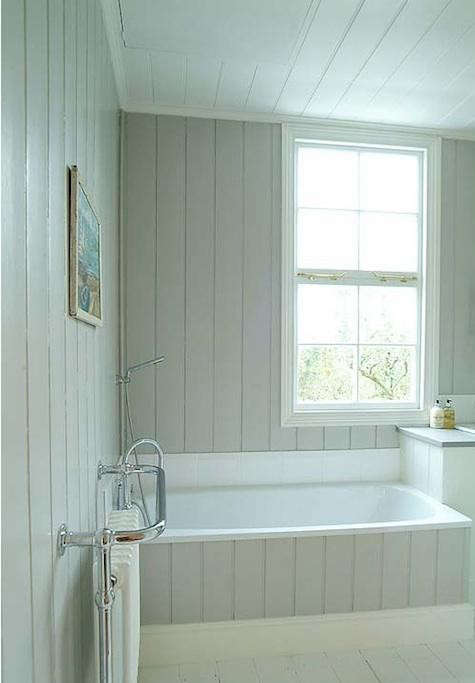I’m afraid that of late I’ve become a crushing bore on the topic of water (just ask my family). I’m on a mission to reduce consumption, at least in my own household. We recently downsized to a smaller cottage in Northern California (a temporary move, but one that I’m liking). Close quarters mean I’m suddenly much more aware of everything that happens, including idle faucets running and the showering habits of primping teens.
The monthly water bill is one gauge of usage, and paying attention to everyday domestic activities is also extremely helpful. Droughts may come and go in California, but it’s the rapid depletion of the country’s groundwater that finally moved me to action. While there are plenty of obvious things that can be done to conserve water, from installing a low-flow showerhead to using low-flush toilets, there are also a number of small, no-cost, daily ways in which, if we alter our habits, we can make a difference.
In this era of environmental doom and gloom, I did point out to my children the news that the ozone layer is thickening for the first time since the 1970s–a positive thing and proof that effort eventually effects change. To that end, here are a 21 water-saving tips that I’ve implemented at home.

Above: The Soma Water Filter’s well-designed–and good looking–glass carafe can go from faucet and fridge to table, no decanting needed.
1. Use a carafe for serving water at meals, and only pour what you know you’ll drink.
2. Decline water in restaurants if you’re not thirsty, and refuse unwanted refills. (Earlier this year, SHED in Healdsburg, CA, adopted the policy of asking diners whether they want water before pouring.)

Above: To keep chilled water on hand, the Holmegard Carafe comes in three sizes and fits inside the fridge door.
3. Prefer your water cold? Instead of letting the water run cold, fill a bottle and keep it in the refrigerator.
4. Plant a large jug by the sink. At the end of a meal, if there’s leftover water in glasses, pour it in the jug, then use this graywater to water plants.
5. Assign a different drinking glass to each person in the house (and refill as desired) throughout the day. This not only saves on water but also means there’s less nightly dishwashing to be done–a win-win.

Above: Add leftover ice cubes to graywater. (Check out our DIY on Making Rose Petal ice Cubes.)
6. Don’t dump unused ice cubes in the sink. Somehow we (make that, I) forget that they’re water, too. Ice should go in the jug by the sink, or in a bowl, and, after melting, be used as graywater (some people put the cubes directly on hearty plants).
7. Use less water for cooking. Vegetables retain more nutrients when prepared in a small amount of water.
8. Save the leftover water from cooking vegetables and use it to make stock. (This is a favorite M.F.K. Fisher practice that she wrote about in How to Cook a Wolf.)
9. Use other cooking water to soak pans (or water plants).

Above: All sorts of water is worth saving, including what’s used to wash vegetables and produce. Photograph by Kristin Perers.
10. Collect graywater from the kitchen sink in a tub beneath the faucet. I have a double sink and keep a washing bowl on one side. We all use that side to rinse hands and produce, so the water fills the bowl–and then it gets reused as graywater at the end of the day.
11. Invest in a low-flow showerhead, or create your own by not turning the taps on fully.
Above: Keep buckets on hand for collecting and hauling water. We’re fans of these dark galvanized metal Redecker Wash Buckets. (Note that they’re from Father Rabbit in New Zealand, so a shipment to the US or UK carries a large carbon footprint. Basic metal buckets from your local hardware store work just as well.)
12. While you’re waiting for the shower to heat up, collect the running water in a bucket under the shower head–a tip from Bea Johnson of Zero Waste Home. (We have yet to implement this one, but it’s on my list). Read more advice from Bea in the Zero-Waste Challenge, an account of my family’s attempt to live waste free (spoiler: it was an epic fail).

Above: Opt for a smaller bathtub, like this one in a paneled London bathroom. Photograph via Light Locations.
13. Take fewer baths. I love a bath at the end of the day, but they consume considerably more water than a shower: as a general estimate, twice as much. Knowing this, I’ve significantly reduced the amount of water I use in my baths, and since the tub in our new place isn’t full size, it requires less water. I did once valiantly try using my dirty bath water for plants, but lugging a bucket through the house was a major pain. Solution? More showers.
14. Don’t linger in the shower. Note to teens: Try to get in and out in five minutes (actually, 10 minutes would even help).
15. Be old-fashioned at the bathroom sink: Plug the basin and and fill it–and then use that water to wash your face, shave, etc.
16. Don’t leave water running while you brush your teeth.

Above: The Geberit In-Wall Tank And Carrier conserves water thanks to its dual-flush feature.
17. Invest in low-flow toilets (preferably Water Sense-certified). Toilets are estimated to be responsible for upwards of 30 percent of household water consumption. You also can create your own low flow by adding a large rock or brick to the water tank. And watch for leaks, the silent consumers. To test your toilet, add a little dye to the tank and if it seeps into the toilet bowl, get the leak fixed.
18. Only flush what you must. Cotton, tissues, and the like should go in a trash can. (Bea of Zero Waste Home–forever ahead of the curve–uses the water collected from the shower to flush the loo.)

Above: Photograph by Michelle Slatalla.
19. Wash only clothes that are dirty. My children have a habit of dumping clean clothes in the laundry basket because it’s preferable to hanging them. Sound familiar?
20. Don’t use more water than you need in the wash cycle.
21. Finally, my personal favorite: Don’t wash your hair every day. Daily shampoos strip hair of its natural oils (ask your hairdresser)–and it wastes water, too.
For more ways to save water, see:















Have a Question or Comment About This Post?
Join the conversation (4)